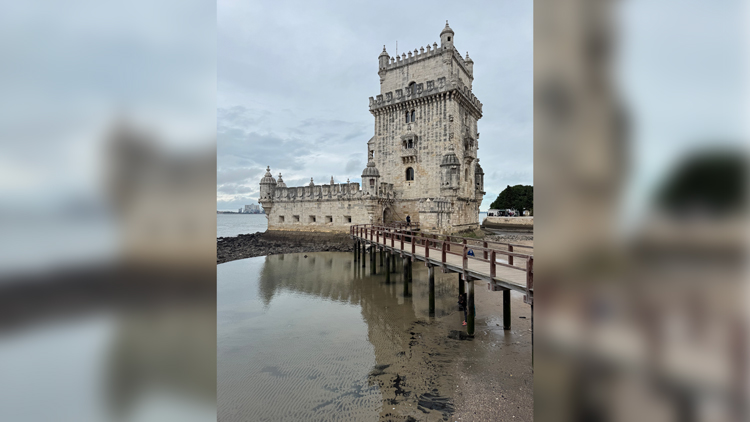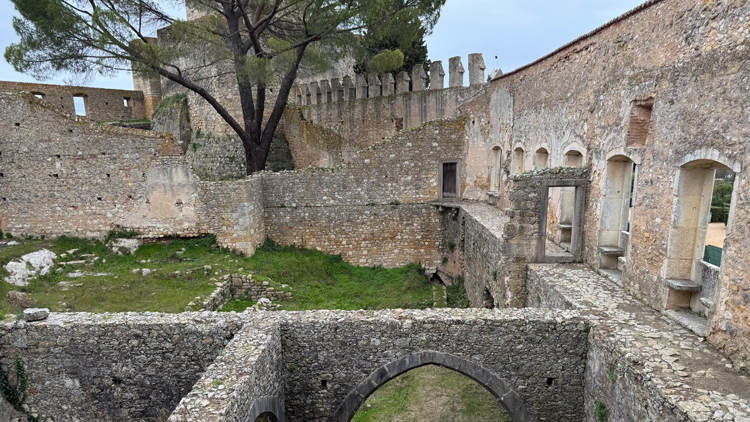
History is everywhere in Portugal! People have lived in the area that is now Portugal for thousands of years. But many historians trace the founding of the country to the 11th or 12th centuries. Let’s explore three places that reveal Portugal’s fascinating history.
1. Conímbriga
Long ago, the land that is now Portugal was part of the Roman Empire. It belonged to a province known as Lusitania. The capital of the province was a city called Conímbriga. Like many Roman cities, Conímbriga had a forum, public baths, and an amphitheater (a round building with rising rows of seats around a stage). If you visit Conímbriga today, you will see ruins that date back almost two thousand years! The site may be best known for its mosaic art (small tiles that form a pattern or picture). Archaeologists continue to unearth long-buried traces of the city’s past inhabitants.
Photo Credit: Katherine Rossetti Lobus/McGraw Hill

Belém Tower in Lisbon
2. Belém
Portugal’s capital city, Lisbon, has long played an important role in world history. Few parts of the city are more historic than the Belém neighborhood. Belém Tower stands on the north bank of the Tagus River. It was built to defend the port of Lisbon. This port was the departure point for explorers like Vasco da Gama and Ferdinand Magellan. Not far from the tower, the Monument to the Discoveries celebrates the Age of Exploration. During this period, European explorers crossed oceans and landed in places like North and South America for the first time.
Another popular destination in Belém is Jerónimos Monastery. A monastery is a place where monks or other religious people live and worship. Built in the 16th century, the monastery is Portugal’s most visited monument. The monastery is admired for its beautiful and detailed architecture. Visitors love to walk along the monastery’s peaceful cloister (covered walkways that open to a courtyard). Jerónimos Monastery stands as a reminder of Portugal’s Catholic heritage.
Photo Credit: Katherine Rossetti Lobus/McGraw Hill

Ruins in the Convent of Christ in Tomar
3. Tomar
About 90 miles from Lisbon, there is a small town called Tomar. During the Middle Ages, Tomar was founded by a religious order known as the Knights Templar. The Knights Templar fought in a conflict called the Crusades (a series of military conquests by European Christians that lasted from 1095 CE to 1571 CE). Muslims from North Africa controlled much of Portugal and Spain beginning in the 8th century. The Templars and other Christian forces defeated the Muslims in the 13th century. Afterwards, the Templars built a castle in Tomar. Today, it is called the Convent of Christ. Later, a prince named Henry the Navigator also built a palace there. Henry sponsored voyages that explored the western coast of Africa and elsewhere. Many historians credit him with ushering in the Age of Exploration. Evidence of these periods of Portuguese history, as well as others, can be seen today in Tomar.
What Do You Think? Which location or period of Portuguese history is the most interesting to you? Why?
Photo Credit: Katherine Rossetti Lobus/McGraw Hill



